|
||||||||||
| Home Nation World Business Opinion Lifestyle ChinAfrica Multimedia Columnists Documents Special Reports |
|
||||||||||
| Home Nation World Business Opinion Lifestyle ChinAfrica Multimedia Columnists Documents Special Reports |
| China |
| Less Is More |
| China's supply-side reform promotes agricultural sustainability through reducing overstocked grains, diversifying land usage and sound soil management |
| By Ni Yanshuo | VOL. 8 February 2017 ·2017-01-22 |
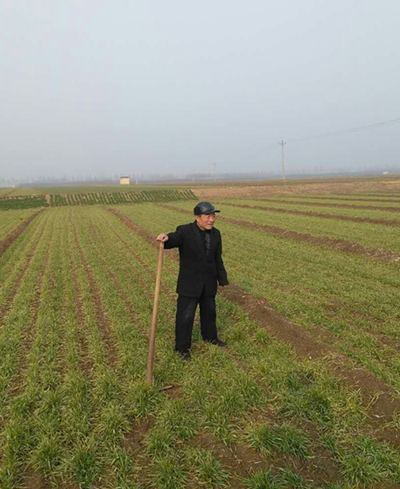
Xie Xifan on his wheat field (XIE HONGJIE)
Xie Xifan is a happy man. Not only because his son has returned for Spring Festival after a two-year work stint in Algeria, but also because his farmland earnings for 2016 exceeded expectations.
The 68-year-old farmer in Dongliang Village, Dongping County, Shandong Province has 11 mu (0.73 hectares) of farmland, on which he plants wheat for half a year and peanuts and corn for the other half. By growing grains, Xie earned more than 25,000 yuan ($3,600) in the past year, according to his calculations. Xie also grows poplar trees, which are an additional source of income.
"I am very satisfied with my life now. It's better and better," he said. "Over a decade ago, we had to pay agricultural tax in grain to the state. But now, we do not need to do that and can even get subsidies from the government for growing grain crops," Xie told ChinAfrica. In 2016, Xie received 1,320 yuan ($191) of subsidies for growing wheat.
"Machines such as planting machines and combine harvesters are widely used here and we do not need many people to do farm work," he said. Currently, only Xie and his wife are taking care of their fields. "Sometimes, when we do not have farm work, we can even travel to other places for sightseeing." Two years ago, his son went to Algeria to work because he was not needed on the farm.
"We have a good harvest almost every year," said Xie. "And my son can have additional earnings abroad."
Reforming supplies
Actually, 2016 was a good harvest year not only for Xie's family, but also for the country as a whole. Figures from the National Bureau of Statistics (NBS) released in December 2016 show China's grain output in the year reached 616.24 million tons, meaning a good grain harvest for 13 successive years from 2003, when 430.65 million tons of grains were produced. Though 5.2 million tons less than the yield of 2015, Ning Jizhe, NBS Commissioner, said it was still a good harvest in terms of the production volume.
The reduction of grain output in 2016 also put an end to China's successive growth in terms of grain production since 2003. "It is not necessary to pay too much attention to the slight reduction in grain production this year. China can definitely ensure its agriculture and food security," said Ning.
He believes the grain production reduction is the result of China's grain growing structure adjustment in the past years. "Though the quantity of China's grain output can meet people's demands, the quality and structure of grain production should be further improved," said Ning.
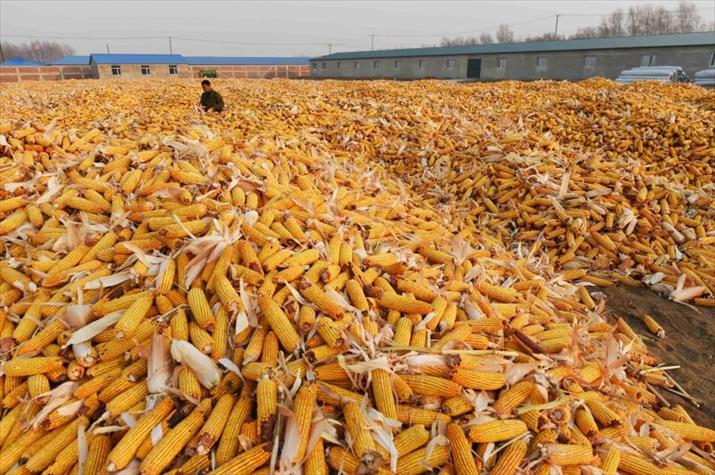
The Central Rural Work Conference, held on December 19-20, 2016 in Beijing, stressed the importance of promoting supply-side structural reform in agricultural development. According to Ning, to promote this supply-side reform, it is important to increase the output of high-quality and organic agricultural produce and reduce low-quality produce with high stocks, such as corns.
"This [obtaining a good harvest for 13 successive years] is a marvelous achievement. However, the unreasonable grain production structure is becoming increasingly prominent," said Xu Ming, Deputy Director of the State Administration of Grain, adding that at the moment, corn and rice are oversupplied, but high-quality wheat is insufficient, while soybean is in great demand.
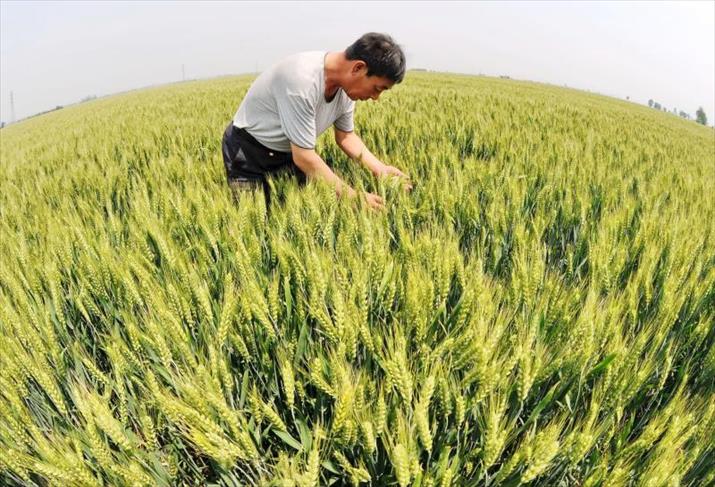
With China's rapid development, people are no longer satisfied with "having enough to eat," but have diverse requirements. "They need more safe, nutritional, healthy and green food, but the supply in this regard is definitely not enough," said Xu. "We must meet people's diversified demands, instead of supplying all the people with the same wheat and rice."
Xu said one of the most important tasks in grain production supply-side reform is to destock corn by reducing corn growing areas in 2017.
Reforming the pricing mechanism and grain collection and storage system can help farmers optimize their grain growing structure. "The State Council has decided to first launch supply-side reform in corn production, and in the next step, we will reexamine our current pricing system in wheat and rice," said Xu. "But the reform will be conducted on the precondition of not reducing China's grain production capacity, so as to stabilize grain production."
Corn gets the chop
Because of the high stock and oversupply of corn in past years, the crops growing areas in China continued to see a reduction of more than 20 million mu (1.33 million hectares) in 2016. Farmers in some corn-growing areas are encouraged to grow silage corn for animal feed or grow other grains.
"For us corn growers, it was not a good year though our corn production grew compared with 2015 because the corn price dropped from 2.4 yuan ($0.35) per kg in 2015 to 1.6 yuan ($0.23) per kg in 2016," said Huang Jintai, a farmer from Wujiazi Village, Jiaohe City in northeast China's Jilin Province. The province locates in China's major grain production base known as the Sickle Arch, covering north and northeast China. According to the Ministry of Agriculture, the areas growing corn for food in the arch were reduced by 10 million mu (666,666 hectares) in 2016; in 2017, a further 10 million mu will be cut.
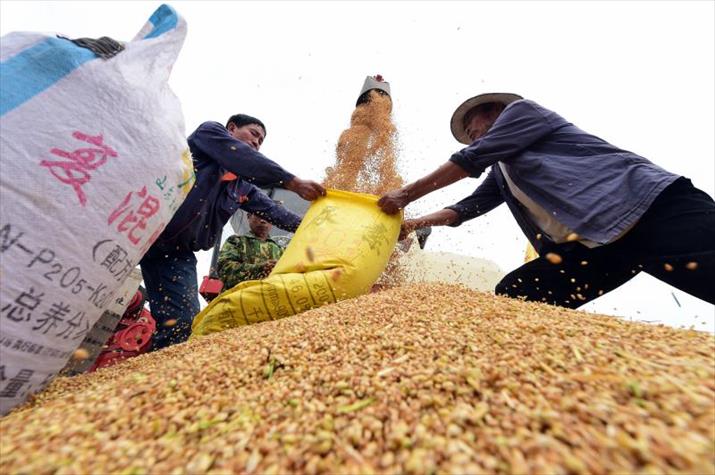
The province is also in the "golden corn growing belt" of the world (40-42 degrees in north latitude), and corn farmers are reluctant to reduce corn growing areas. But owing to the increasingly lower corn prices, they have to make changes.
Huang has 150 hectares of corn farmlands, with most part he got through land-use right transfer from his neighbors. The low corn price has been a major concern for him. In 2016, he decided to use half of his land to grow silage corn. "I sold the silage corn to nearby cow and goat farms as animal feed. Those who raise cows and goats were also previous corn farmers, and now they also found a way out," said Huang.
Farmlands get a makeover
Besides reducing corn production, promoting land fallowing and crop rotation is another way in supply-side reform. According to experts, in the current stage when the grain supply in the domestic and international markets is adequate, it is a good opportunity to promote land fallowing and crop rotation so as to improve the quality of lands and maintain sustainable development of agriculture.
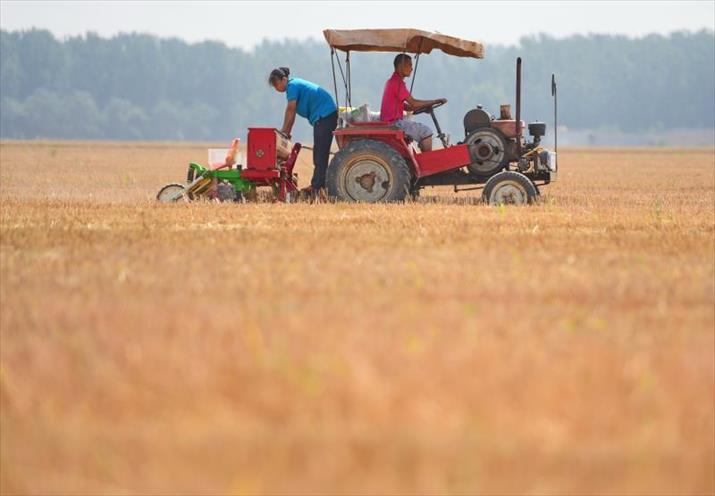
The Ministry of Agriculture launched a pilot project in July last year to promote crop rotation in 5 million mu (333,333 hectares) of farmland and fallowing in 1.16 million mu (77,333 hectares), with rotation areas mainly in northeast and north China and fallowing areas mainly in areas polluted by heavy metal and places with serious deterioration of the ecological environment. According to the ministry, the pilot project will be expanded in the coming three to five years.
"Land fallowing and crop rotation should be promoted on the precondition of ensuring China's national food security and not influencing farmers' income," said Yu Xinrong, Vice Minister of Agriculture.
Hebei Province in north China launched a pilot project of seasonal fallowing in 2014. Shi Fulin, a farmer from Yuke Town, Shenzhou City, thinks the project is good both for farmers and the land. For the past years, he has grown wheat for one year, and left the land fallow for the next year. "When my lands are idle, I can get 500 yuan ($72.5) of subsidy for each mu," said Shi. "After all, I don't have to work on the farmland that year."
In most grain production areas in China, farmers plant and harvest two crops in one year; in south China with higher temperatures, sufficient sunlight and enough water, farmers even grow three crops a year. "It is time to let our farmlands have a rest," said Shi.
| About Us | Contact Us | Advertise with Us | Subscribe |
| Copyright Beijing Review All rights reserved 京ICP备08005356号-5 京公网安备110102005860号 |